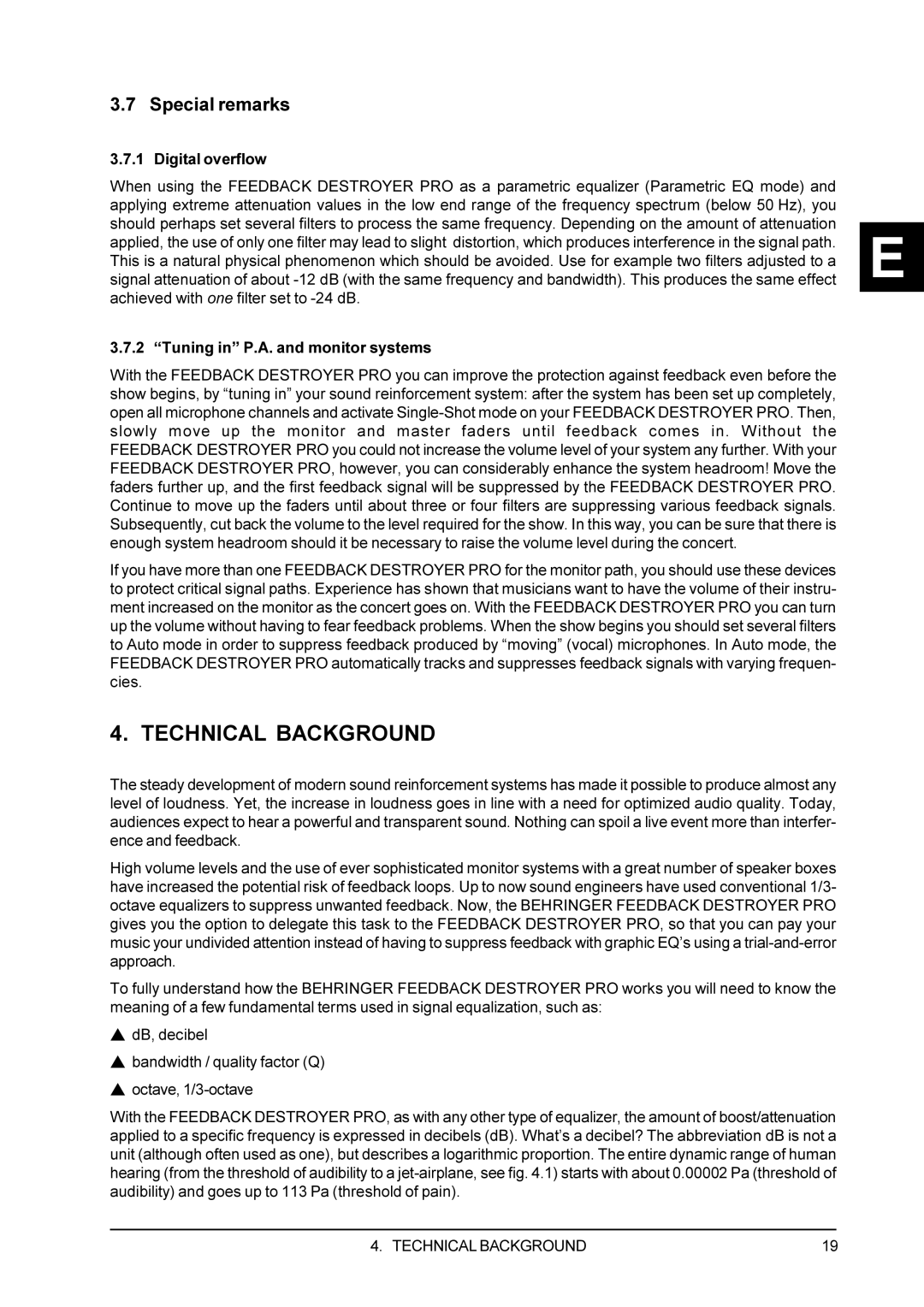
3.7 Special remarks
3.7.1 Digital overflow
When using the FEEDBACK DESTROYER PRO as a parametric equalizer (Parametric EQ mode) and applying extreme attenuation values in the low end range of the frequency spectrum (below 50 Hz), you should perhaps set several filters to process the same frequency. Depending on the amount of attenuation applied, the use of only one filter may lead to slight distortion, which produces interference in the signal path. This is a natural physical phenomenon which should be avoided. Use for example two filters adjusted to a signal attenuation of about
3.7.2 “Tuning in” P.A. and monitor systems
With the FEEDBACK DESTROYER PRO you can improve the protection against feedback even before the show begins, by “tuning in” your sound reinforcement system: after the system has been set up completely, open all microphone channels and activate
If you have more than one FEEDBACK DESTROYER PRO for the monitor path, you should use these devices to protect critical signal paths. Experience has shown that musicians want to have the volume of their instru- ment increased on the monitor as the concert goes on. With the FEEDBACK DESTROYER PRO you can turn up the volume without having to fear feedback problems. When the show begins you should set several filters to Auto mode in order to suppress feedback produced by “moving” (vocal) microphones. In Auto mode, the FEEDBACK DESTROYER PRO automatically tracks and suppresses feedback signals with varying frequen- cies.
4. TECHNICAL BACKGROUND
The steady development of modern sound reinforcement systems has made it possible to produce almost any level of loudness. Yet, the increase in loudness goes in line with a need for optimized audio quality. Today, audiences expect to hear a powerful and transparent sound. Nothing can spoil a live event more than interfer- ence and feedback.
High volume levels and the use of ever sophisticated monitor systems with a great number of speaker boxes have increased the potential risk of feedback loops. Up to now sound engineers have used conventional 1/3- octave equalizers to suppress unwanted feedback. Now, the BEHRINGER FEEDBACK DESTROYER PRO gives you the option to delegate this task to the FEEDBACK DESTROYER PRO, so that you can pay your music your undivided attention instead of having to suppress feedback with graphic EQ’s using a
To fully understand how the BEHRINGER FEEDBACK DESTROYER PRO works you will need to know the meaning of a few fundamental terms used in signal equalization, such as:
sdB, decibel
sbandwidth / quality factor (Q)
soctave,
With the FEEDBACK DESTROYER PRO, as with any other type of equalizer, the amount of boost/attenuation applied to a specific frequency is expressed in decibels (dB). What’s a decibel? The abbreviation dB is not a unit (although often used as one), but describes a logarithmic proportion. The entire dynamic range of human hearing (from the threshold of audibility to a
E
4. TECHNICAL BACKGROUND | 19 |
